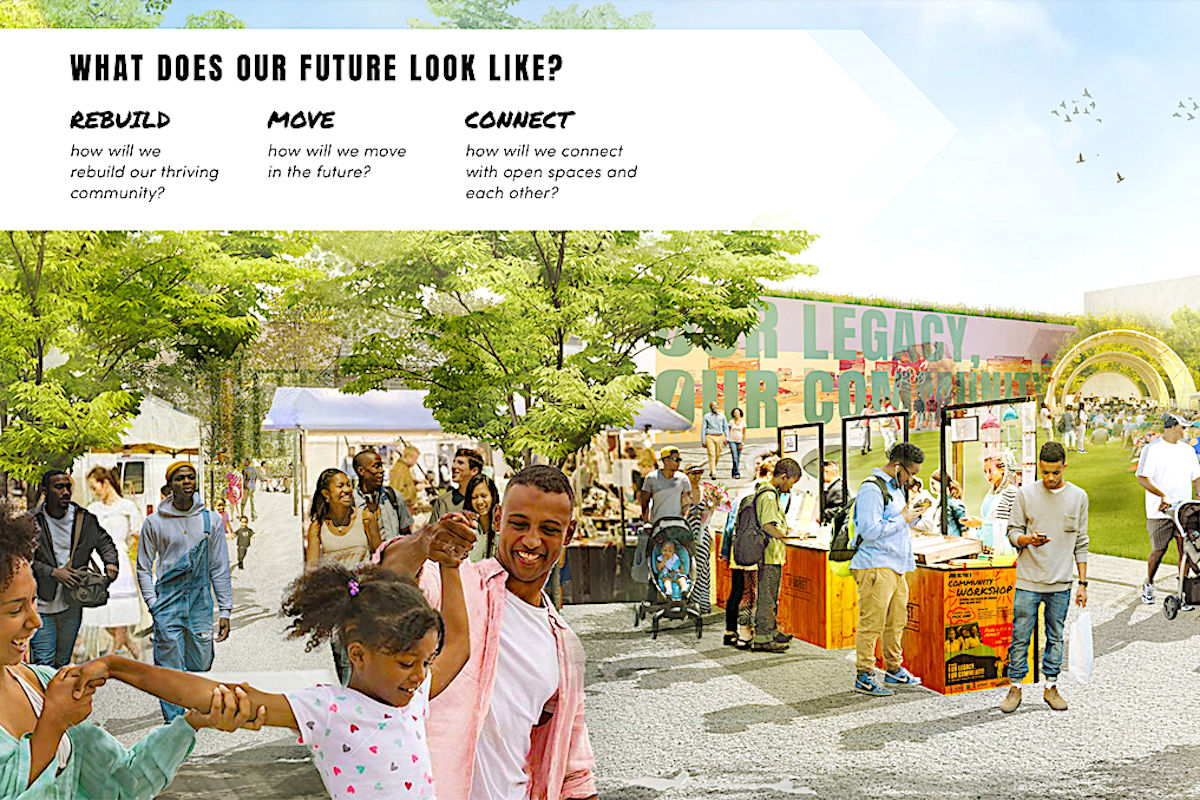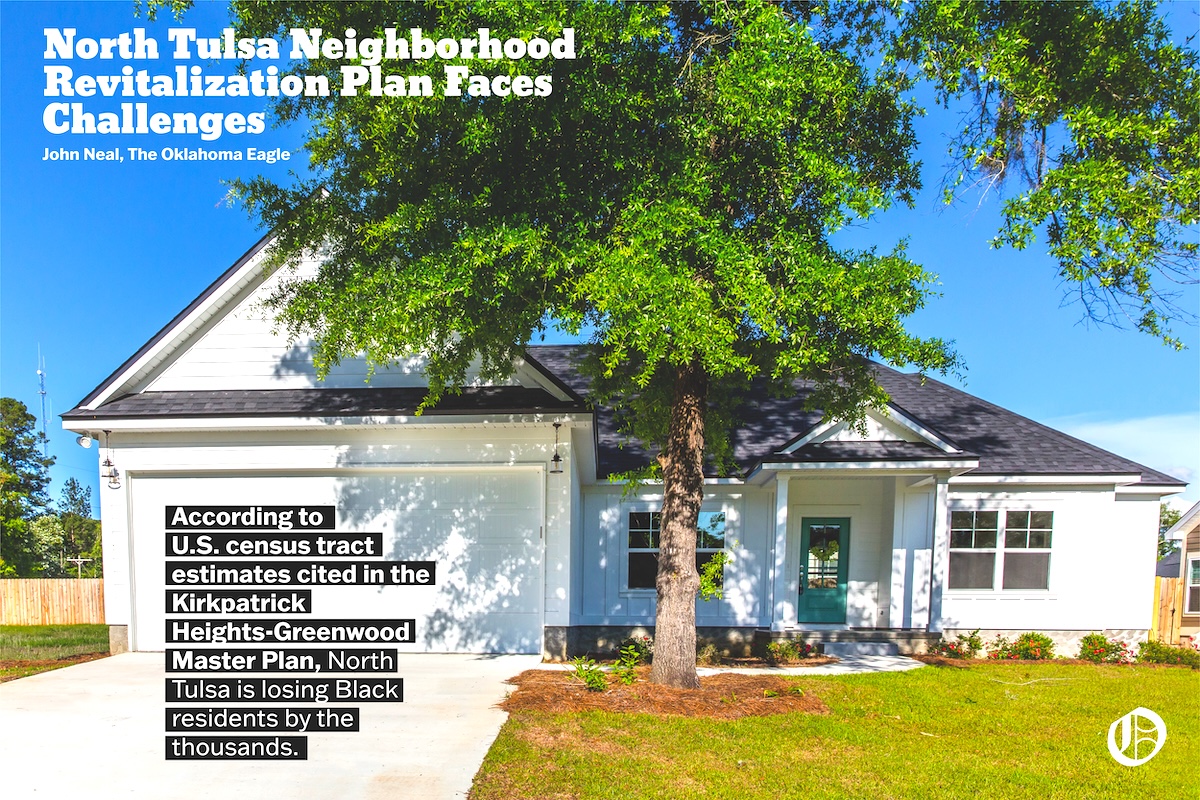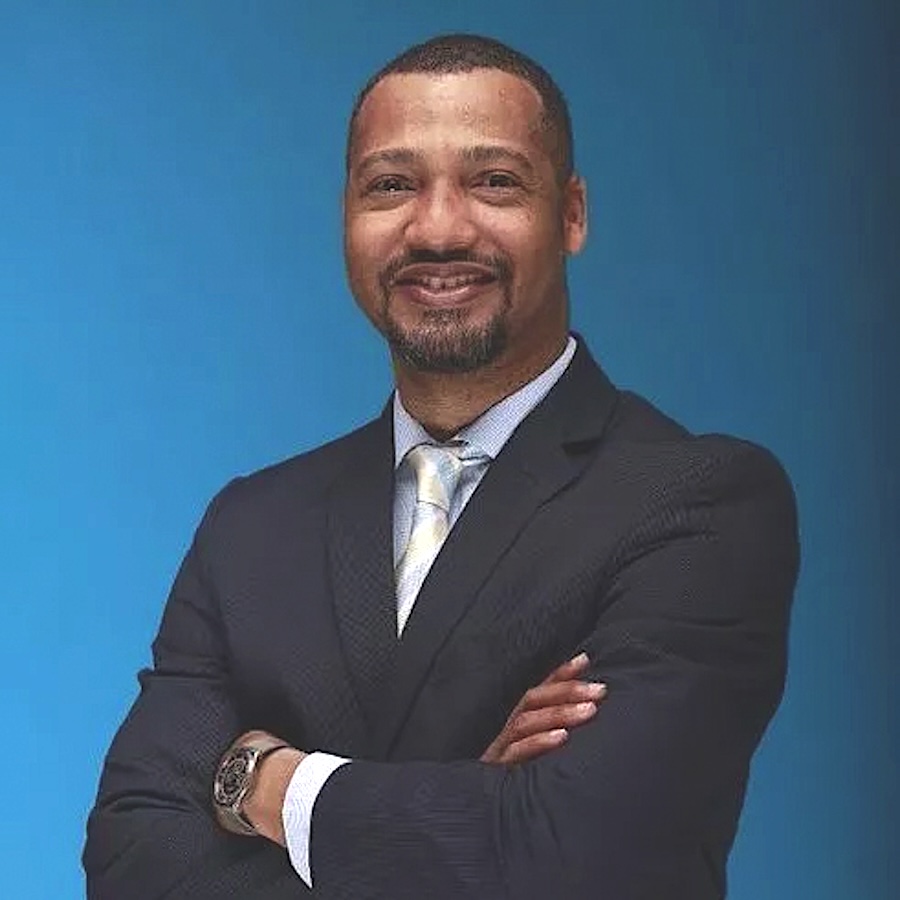
LOCAL & STATE
John Neal
Photo, Adobe Images
Delays Raise Questions About Whether The Plan Can Reach Its Goals
A master plan to revitalize north Tulsa neighborhoods and stem the flow of thousands of Black households out of north Tulsa is behind schedule in reaching key interim goals that the creators of the plan established to make it work. And the team that is assigned to ensure that the plan happens faces significant challenges. As The Oklahoma Eagle presented in the first two articles in this three-part series, major improvements are planned on 70 acres at three sites just north of I-244 and east of LL Tisdale Parkway.
The team behind the Kirkpatrick Heights/Greenwood Master Plan has made bold claims about revitalizing north Tulsa neighborhoods. Garlen Capita, heading the design team for the project, said, “This initiative has the potential to repair historical inequities” and “build generational wealth.”
Yet, no site improvements have been made since the Tulsa City Council adopted the plan in December 2022. Still, a senior Tulsa Development Authority official told The Oklahoma Eagle in an interview that steady progress is being made behind the scenes.
The largest improvement site in the plan, dubbed the Core, would add up to 1,000 residential units and hundreds of thousands of square feet of commercial space in a 45-acre mixed-use district. The area proposed for this development is between The Heights Historic District and MLK Jr Boulevard, immediately north of I-244. The mixed-use district concept plan, developed with the input of over 1,000 north Tulsa participants, includes a grocery store, a civic/theater, and other neighborhood amenities.
Two smaller additional sites are proposed for redevelopment. They include plans for parks and open space in an area described as “The Green Stitch” and “Greenwood Plaza” to be rebuilt as a multi-functional community event space, e.g., an amphitheater located where the Juneteenth Festival is celebrated near the Vernon AME Church.

The Plan and Challenges
Yet, as discussed in the second article in this series, plan implementation needs to catch up in order to meet early key project milestones, and other challenges have to be addressed. Foremost among those challenges is the fear among many north Tulsans that the projects could accelerate the gentrification already underway and change the character of the Greenwood community. Additionally, without provisions for affordable housing, most Tulsans in the plan study area will not be able to afford rent or purchase homes in the proposed mixed-use district.

An Advisory Committee, formed well behind schedule, is working with PartnerTulsa to create the plan’s implementing authority, the Community Development Corporation (CDC).
Advisory Committee members chosen after an open solicitation for applicants by the Tulsa Development Authority include Lana Turner-Addison, Shella Bowlin, Eugene Harris, Scott Moore y Medina, Joshua Roby, Kiana Smith, William Tisdale, Brentom Todd and Daquet Wilson.
Jonathon Butler, Senior Vice President of Community Development in PartnerTulsa, discussed the Master Plan with The Oklahoma Eagle staff and addressed questions about potential obstacles and challenges to its successful implementation. Butler spearheads the implementation of the master plan.
Butler was forthcoming and candid in addressing the challenges that the implementation of the plan has faced. “The community has been very clear about their hopes and desires. I can’t predict how things will completely shake out,” he said. “We will try to execute what the community has expressed that they want to the best of our abilities.”
Questions & Answers
The following is an interview that The Oklahoma Eagle conducted with Butler. The Eagle has summarized and reorganized the discussion and made minor paraphrasing in a few instances for clarity and readability.

Jonathan Butler, Senior Vice President, Community Development, PartnerTulsa. Photo, PartnerTulsa
Milestones
The Oklahoma Eagle: PartnerTulsa needs to catch up on key milestones, including the work of the all-important Advisory Committee, whose membership was scheduled to be appointed within three to six months of plan adoption but only recently began work.
Butler: We had planned to choose the implementing organization before the plan was adopted. Instead, we made the decision afterward, working with approximately 30 community members.
There has been a lot of work going on behind the scenes. We have applied for three different federal grant programs; a fourth is pending. We will have applied for some $41 million.
The Oklahoma Eagle: The Salvation Army operates a facility in the middle of the proposed mixed-use development that the plan says you must acquire.
Butler: We have not had any discussions to date about their property.
What about the development of the grocery store, the civic/theater, and other amenities in the mixed-use district? When will these occur?
That’s to be determined. On the one hand, you must have enough people there with enough disposable income to make them viable. But you want to have some draws and not be completely residentially based.
The Oklahoma Eagle: The Plan has several hundred thousand square feet of commercial space, which appears to be much more retail and office space than the plan population can support.
Butler: I agree. I don’t know if there will ever be a demand for that much retail or office space. We are converting downtown commercial space into housing units. Hope is what is put down on paper. We may have changes so long as it has the mission and values of the master plan. This is a visionary guide. We will try to keep it closely tied to the spirit of the plan.
Housing and affordability
The Oklahoma Eagle The Plan calls for 750-1,000 residential units in an area that has lost eight percent of its population over the last decade and has housing stock available in the study area.
Butler The housing was based on what the land has the capacity to do, not the specific demand. There are housing deficits in all of Tulsa, not just north Tulsa. Our housing assessment study estimates that Tulsa will need 13,000 residential units over the next ten years. We think our mixed-use district with diverse housing will increase the number of people coming into the community. Examples include young professionals who don’t want the maintenance costs of a traditional house or retired people wishing to downsize.
The Oklahoma Eagle: Many people in the study area cannot afford the housing in the proposed mixed-use district. Do you have a target for a certain number or percentage of affordable units? No target is stated in the Master Plan.
Butler: No. We don’t have an organization yet that will make that determination. That organization will make that determination based on a whole host of factors, including market conditions. This plan is designed with the geography and proximity to the downtown area.
The Oklahoma Eagle Does the plan provide low-cost housing in the $150,000–$200,000 range?
Butler I recently talked to a Habitat for Humanity representative, and they can’t produce a standard house for less than $150,000. We have programs that assist with down payment and closing costs. We also need subsidy programs that bridge the gap between what people can afford and what it costs to purchase a home. We have programs and resources, but we need more.
Gentrification
The Oklahoma Eagle Gentrification is a big issue in the Black community.
Butler: We have tools to limit negative effects, such as home repair programs and tax policies, particularly for aging residents. We want to create opportunities for Tulsa natives who want to move back.
In the listening sessions, people wanted some assurance that Black home ownership would be preserved.
We can’t make race-based declarations, as that would violate the law. However, three home buyer ownership programs are directly targeted at north Tulsa. We can make sure we have enough products available to them.
The Oklahoma Eagle: Who will be responsible for the neighborhood stabilization strategies you cite in your plan?
Butler: The Community Development Corporation (CDC) will be the implementing organization. The Tulsa Development Authority will appoint the members. The CDC might decide that it doesn’t want to own the land. PartnerTulsa and the City of Tulsa will act in concert with the CDC on the stabilization strategies.
Implementation
The Oklahoma Eagle: Will the final development match the illustrations in the concept plan?
Butler: The hope is that when you look down on paper, you see a vision of what could be. You may have some changes when you get to the technical reality of what can be produced. I view the Master Plan as a visionary guide of what could be possible. We will try to keep it as tight as possible.
The Oklahoma Eagle The plan states that the CDC is not a government entity and typically has but is not required to have one-third of its membership from the community. Is it the final decision-making authority?
Butler: Yes. The Tulsa Development Authority will make those appointments, which are scheduled for completion in December. While the skill set for the CDC membership is different, I hope and desire that some from the Advisory Committee will be appointed. All nine have connections to the community, and we are very proud of that.
The Oklahoma Eagle Will any of the sites have improvements this December, two years after adopting the Master Plan?
Butler: No. But I want the community to know this thing is moving even though you might not see any dirt moving, fences going up, or construction happening. There is a lot of work being done.
Following the Eagle interview, PartnerTulsa announced on Sept. 30, 2024, a $990,000 grant award from the U.S. Department of Transportation. The grant is for evaluating transit services for the master plan district. The announcement stated, “The funds will be allocated over three years supporting…staffing, expert analysis and policy development.”
This is the third in The Oklahoma Eagle’s three part series about the Kirkpatrick Heights/Greenwood Master Plan. John Neal, who reported and wrote the series, is a regular contributor to The Eagle.










